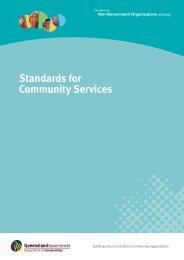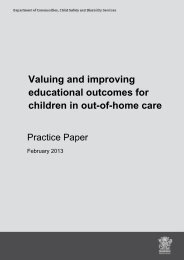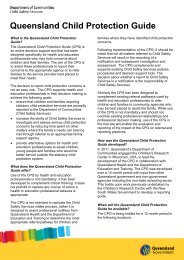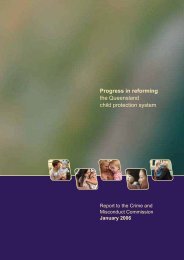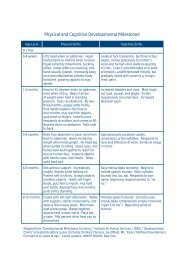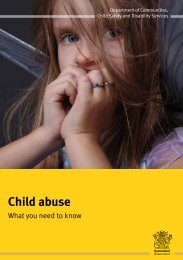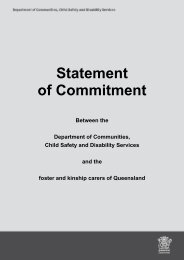Housing and Support Program (HASP): Final Evaluation Report
Housing and Support Program (HASP): Final Evaluation Report
Housing and Support Program (HASP): Final Evaluation Report
Create successful ePaper yourself
Turn your PDF publications into a flip-book with our unique Google optimized e-Paper software.
2.4 Procedure<br />
2.4.1 Clients – procedure for data collection<br />
Initial contact with clients was through their support agency. All <strong>HASP</strong> clients were approached by support staff<br />
<strong>and</strong> invited to participate in the evaluation. Clients were informed about the evaluation <strong>and</strong> provided with details<br />
of what their involvement would entail. Those interested in being involved completed a ‘consent to be contacted’<br />
form <strong>and</strong> this was then mailed to the evaluation team. The evaluation team then made contact with the client<br />
to arrange a time for interview. At this initial meeting the client was again provided with information about the<br />
project, <strong>and</strong> fully informed consent in writing was obtained. Having obtained consent, the client was invited to<br />
complete the Wisconsin Quality of Life Index. Eighty clients participated in this component of the evaluation.<br />
In addition to providing consent to be involved in the evaluation, each client was also asked to provide consent<br />
for the evaluation team to access his/her data in CIMHA <strong>and</strong> 77 of the 80 did so. Having identifi ed the date that<br />
each individual entered <strong>HASP</strong>, it was possible to obtain the outcomes data from CIMHA for clients at 12 months<br />
<strong>and</strong> three months prior to entering <strong>HASP</strong> <strong>and</strong> for three months <strong>and</strong> 12 months post-entry into <strong>HASP</strong> (Table 2.5).<br />
We also examined data at 24 months post-entry into <strong>HASP</strong>, but the number of clients with completed measures<br />
was too small to be useful in the study.<br />
Table 2.5 Overview of data collection time-points (CIMHA D=data)<br />
Time 1 Time 2 Time 3 Time 4<br />
Clients enter <strong>HASP</strong><br />
12 months-pre 3 months-pre 3 months-post 12 months-post<br />
In addition to the above data, a sub-group of consumers was invited to participate in in-depth interviews with<br />
a member of the research team. These individuals were selected on their ability to contribute to an interview<br />
<strong>and</strong> their willingness to discuss their views of <strong>HASP</strong>. Both of these criteria were assessed through observations<br />
made by the research assistant during the completion of the Wisconsin Quality of Life Index <strong>and</strong> in subsequent<br />
discussions with support agency staff.<br />
2.4.2 Clinical staff – procedure for data collection<br />
The name of the Case Manager responsible for each consumer was obtained directly from consumers during<br />
their initial interview with the research assistant (described above). Case Managers were then contacted directly<br />
by a research assistant <strong>and</strong> invited to complete a brief questionnaire (i.e. Case Manager Questionnaire).<br />
This questionnaire invited Case Managers to comment on their perceptions of <strong>HASP</strong> <strong>and</strong> their interactions<br />
with support <strong>and</strong> housing staff.<br />
Case Managers were asked to provide general information about the program — no information concerning<br />
any individual client was collected from Case Managers. The questionnaire was sent to Case Managers via<br />
mail or email.<br />
In addition, a sub-group of 31 clinical staff participated in focus group discussions <strong>and</strong> individual interviews<br />
with a member of the research team. These individuals were selected on their willingness to contribute to<br />
an interview <strong>and</strong> their experience of working with <strong>HASP</strong> clients. A member of the research team also conducted<br />
individual interviews with 10 Service Integration Coordinators from across Queensl<strong>and</strong>. These individuals were<br />
contacted via email <strong>and</strong> invited to be involved in the evaluation. None of the Service Integration Coordinators<br />
contacted refused to be involved.<br />
<strong>Housing</strong> <strong>and</strong> <strong>Support</strong> <strong>Program</strong> (<strong>HASP</strong>)<br />
21



